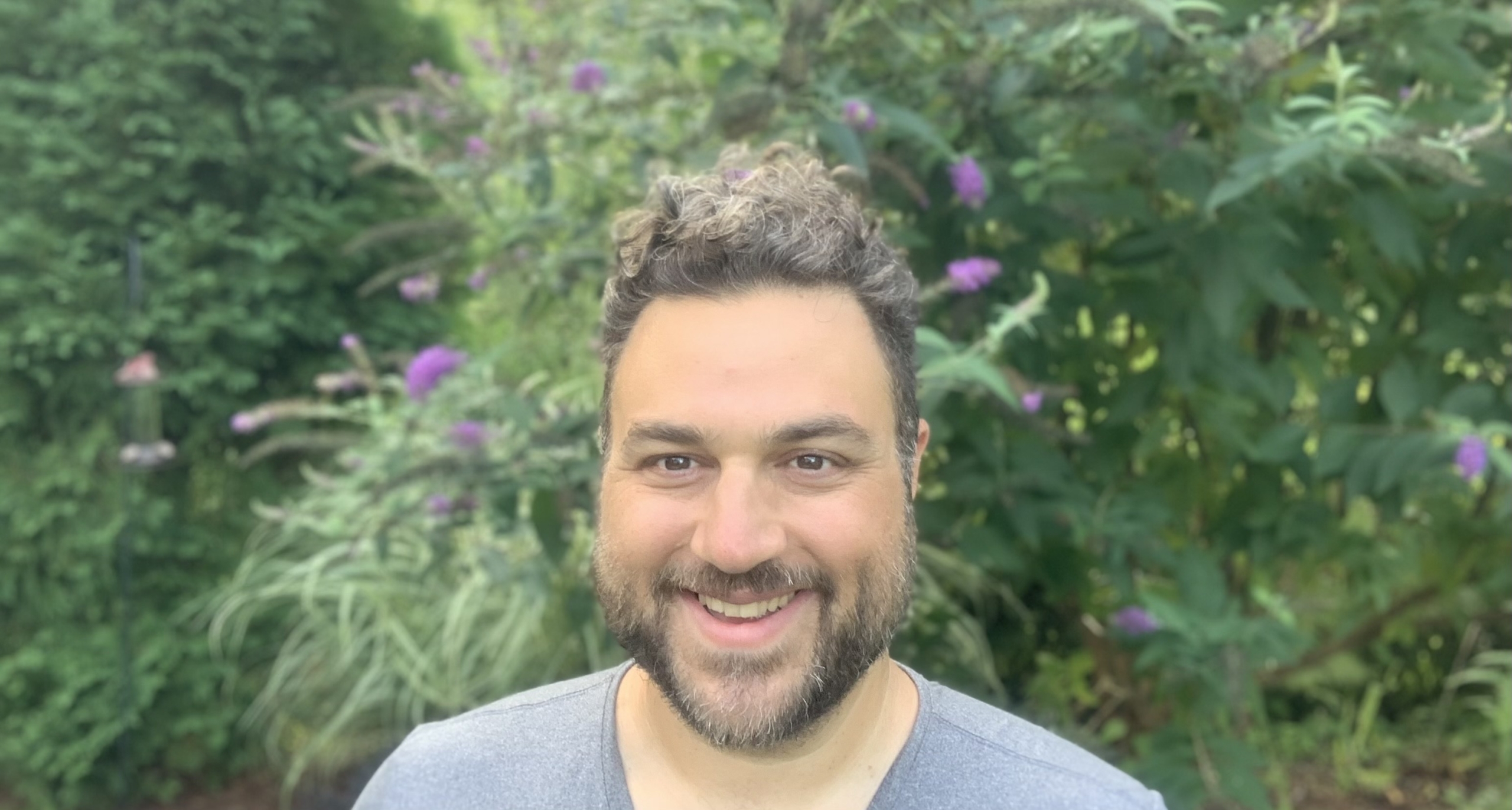If you’re struggling with emotional eating, you’re not alone. We’ve all turned to food for comfort at some point in our lives, whether that meant binging on cookies and ice cream after a stressful day, inhaling a bag of chips in the car, or having a second dessert on a special occasion.
To make matters more challenging, the pressures of modern-day living can feel unrelenting, and delicious food options are everywhere, providing constant temptation via commercials, billboards, and grocery store shelves. When we can’t seem to stop emotional eating, it’s important to know that it’s not our fault. We’re human, and there’s a biological reason that we repeat these cycles.
Read on to learn how our habit loops are formed, why changing them isn’t as simple as “knowing better” or “being stronger,” and how to overcome emotional eating patterns and enjoy a healthier relationship with food. Studies show that, with the right tools, we can change unwanted habits–without willpower or force–and create lasting changes in a way that actually feels rewarding. An evidence-based approach to mindful eating can help you rewire your brain and change the way you relate to yourself and food–no matter how long you’ve been engaging in unwanted habits.
How We Form Emotional Eating Patterns
The emotional eating habit loop starts when we make a connection between food and feeling good. From there, we further unintentionally reinforce this pattern every time we eat to soothe uncomfortable emotions rather than in response to physical hunger.
As humans, we’re wired to seek out pleasure; it’s part of our biology. Our brains use a reward-based system to collect information and store memories. When we do something that feels good, the brain stores that information, and–especially if we repeat the behavior again and again–we form a habit. We can summarize this reward-based learning process (aka habit loop formation) in three parts:
- Trigger (such as seeing food).
- Behavior (such as eating the food).
- Reward (such as pleasurable taste and feeling good).
When food was scarce, this reward-based learning system kept us alive. When we found a food or water source, our brains made a note of what it was and where we found it, thus keeping our species from dying out.
Likewise, when we came upon a dangerous situation–such as a wild animal’s lair or poisonous berries–we stored that information to avoid the danger going forward. These situations created context-dependent memories, and we learned to repeat or avoid the situation next time. Thus, our brains formed habits.
Helpful and Unhelpful Habit Loops
Many of our habit loops are helpful. When we’re putting on shoes, it’s helpful to automatically know how to quickly tie our shoelaces. When we brush our teeth, we can do so quickly and easily without much effort. When we leave home for the day, we automatically lock the door, and we drive cars without giving much thought to stepping on the gas and brake pedals, turning the steering wheel, or using our blinkers. These habits are helpful in allowing us to get through mundane tasks quickly and comfortably, so that we can be more productive and save our energy for more important things.
Other habits, such as emotional eating, are not so helpful. We know that binging on our favorite high-sugar, high-fat foods isn’t going to solve our problems, but we continue to do it because it’s hardwired in our brains as pleasurable and tension-releasing–albeit, short-term. Because emotional eating itself can lead to feeling more stressed, sad, guilty or ashamed, the cycle perpetuates itself. And because emotional eating is linked to weight gain, obesity, diabetes, and other health problems, as well as additional emotional and mental health issues, these emotional eating habits harm our health when repeated too often.
Fortunately, you can overcome unwanted habits. In order to understand how to break the cycle of emotional eating, let’s look a little more deeply at what habits are and how they’re created.
The Emotional Eating Habit Loop: Old Brain in a New World
- We experience a trigger, such as having a hard day at work (that’s an external trigger) or feeling tired, anxious, or sad (those are internal triggers).
- We react by eating (behavior).
- And because food tastes great, we feel better temporarily (reward), and our brains store that information as a memory so that when we want to feel great again, we come back for more food–and more rewards.
Emotion vs. Reasoning: Why Dieting Doesn’t Address Emotional Eating Patterns
The brain hardwires our habits, setting them up to be automatic behaviors, not conscious decisions. This is why dieting often doesn’t work. Dieting relies on willpower and conscious decision-making, which involves the prefrontal cortex. But our brains are geared toward survival–and the reward-based learning system is a survival mechanism utilizing mostly deeper, more primitive areas of the brain, such as the amygdala, hippocampus, and nucleus accumbens.
Knowing this can help clarify why so many of us engage in emotional eating. When we know we “shouldn’t” eat another piece of chocolate cake, another scoop of ice cream, or a bag of chips, our prefrontal cortex knows to resist the urge–and sometimes, we may do so–but our habits are ingrained in deeper areas of the brain. And the prefrontal cortex is also subject to fatigue.
When we’re stressed, we’re more susceptible to our old, memorized habit loops. You may have heard the acronym, HALT (hungry, angry, lonely, tired) to describe states that leave us reverting to automatic habits rather than conscious decision-making. When we’re hungry, angry, lonely, or tired, the prefrontal cortex may go “offline,” and we may feel powerless to stop ourselves from engaging in hardwired habits–even if we know, intellectually, that the behavior is unhelpful.
Some scientists believe it’s because the prefrontal cortex was the most recent part of the human brain to develop, from an evolutionary standpoint, that it may be the first to “shut down” when we’re feeling depleted. This is why emotional eating has nothing to do with strength, intelligence, or willpower. On the contrary, it is a very human and understandable habit, tied to ancient needs and an older part of the brain.
The Cycle of Emotional Eating Patterns
Even if engaging in emotional eating makes us feel guilty, ashamed, or lethargic for hours afterward, our reward-based learning system often leads us to keep repeating the same behaviors to try to relieve these unpleasant feelings. We engage in emotional eating, and thus the cycle continues.
High-sugar, high-fat foods are specifically engineered to keep us coming back for more. They cause our stomachs to send signals to the brain that fire off dopamine in the nucleus accumbens, which is a key chemical messenger involved in the reward-based learning process. This same process is activated by smoking, drinking alcohol, and even cocaine.
High-sugar, high-fat foods often contain additives like flavor enhancers, too, that further perpetuate the cycle of cravings, emotional eating, and weight gain. Sugar, in particular, hijacks our brain’s reward system, encouraging us to continue eating even if we’re already full, meaning there is a biological reason that we have trouble resisting our favorite sweets.
Remember: there is nothing wrong with you if you feel “stuck” in an emotional eating habit loop. As we just saw, there are good reasons why these behavior loops can form. But with the right tools, you can break the cycle and develop new habits you feel good about–without the use of willpower, restriction, or force. Changing habits in a sustainable way doesn’t have to be hard or feel like a punishment. Recent research shows a science-based mindful eating program can help you create lasting changes, enjoy food more, and feel more at home in your body–without depriving yourself.
By developing increased self-awareness, self-empowerment, and self-care, you can overcome your emotional eating patterns and dramatically change your relationship with food–and, in turn, with yourself. It all starts with developing greater awareness, which we can do relatively quickly and easily, which, by itself, can be very nourishing.
Mindfulness to Unwind the Emotional Eating Habit Loop
Mindfulness–or being aware of our experience in the present moment–helps us build greater awareness and causes changes in the brain. You can think of mindfulness as a form of strength training for your brain. Whereas athletes build strength in their muscles with strength-training exercises such as weightlifting, we can build stronger awareness with mindfulness training for the brain.
Mindfulness helps us to become more aware of our habits, see clearly what we really get from them, and use this data to change how we relate or respond to them. And once we change our relationship with our habits, we can make different choices and create lasting changes in our behavior.
Anyone can do this; it just takes some practice and attention. Remember the three components of the habit loop (trigger, behavior, and reward)? Using mindfulness, we can more fully experience our thoughts, feelings, and bodily sensations during each part of the habit loop.
If we focus most of our attention on the “reward” part of the loop, recognizing all the results of our habits and feeling them experientially, we become increasingly disenchanted with them. This includes everything that results from the habit, including pleasure from the taste of food, the emotions we feel after we eat (perhaps guilt or shame,) our physical sensations after eating (such as lethargy or bloating,) or whatever effects emotional eating has for you.
When we fully and mindfully experience all of the results of our habits, we start to teach our brains that they’re not as positive as we once thought. This allows the orbitofrontal cortex (OFC) to update the relative reward value of our behaviors, which helps to break their hold over us. And, over time, we begin to feel disenchanted with our old habits–and new, healthier choices come naturally.
Mindful Eating: A Practice to Change Emotional Eating
Rewiring your brain to overcome the emotional eating habit loop takes patience and practice. But you can do it, and you may even find the process to be deeply nourishing. So ease in, and try to give yourself some grace.
Remember: this has nothing to do with willpower. It’s all about biological patterns, and these patterns can take time to change. Try to maintain a sense of kind curiosity while you increase your awareness around your habits. You are a complex, capable person, with many internal resources.
You can start unraveling your emotional eating patterns right now by paying close attention when you eat unhealthy food such as candy, chips, cookies, or anything high in sugar. Try eating slowly and mindfully today and really noticing everything that comes up. Here are some tips for mindful eating:
- Pay close attention to how it looks before you take a bite. What color is it? What is the texture like?
- How does it feel in your hand or spoon, or on your fork? Is it light, heavy, crumbly, gooey?
- How does it smell and taste? Does it make a sound?
- How does it feel in your mouth when you chew? And how does it feel going down your throat, into your stomach when you swallow?
- Don’t take another bite until you’ve finished chewing and have swallowed the one before. You can put down your fork or spoon between bites.
- Notice your experience after each bite. How does your stomach feel? What thoughts and emotions are present? Any other sensations in your body?
- How do you feel after you’ve finished? Kindly and non-judgmentally noticing all the results of eating the food, how does your body feel? What emotions do you notice? How long do these results last?
The more you practice mindful eating, the more awareness you’ll cultivate around your habit loops–and the more disenchanted you’ll feel with them. With practice, you’ll be able to recall how the results of emotional eating feel and use this data to experience your cravings without acting on them. And you’ll make choices from a place of empowerment instead of reactivity.
Cravings do pass; they don’t last forever. With practice and patience, you can learn to notice them, sit with the changing thoughts, emotions, and sensations in your body, and ride them out instead of letting them overpower you.
Eat Right Now: Proven Tool for Overcoming Emotional Eating
It is normal to feel powerless over your emotional eating habit loop, but you can overcome it and enjoy a healthy relationship with food. And you don’t have to do it alone. Engaging in a science-based mindful eating program can help you change your unwanted behaviors and develop new habits that feel good.
Eat Right Now is an evidence-based program developed by neuroscientist and addiction psychiatrist, Dr. Judson Brewer. It is a unique mindfulness training program that helps you understand how your mind works and learn tools to change unwanted eating behaviors and learn to make new, empowered choices regarding food, eating, and coping with difficult emotions. With daily lessons, craving-specific tools, a journaling tool, and a supportive online community–complete with live weekly calls and expert facilitators–you can learn to differentiate between real hunger and emotional craving and build new healthy habits that last.
You can overcome your emotional eating patterns. Get started with the Eat Right Now program today.




